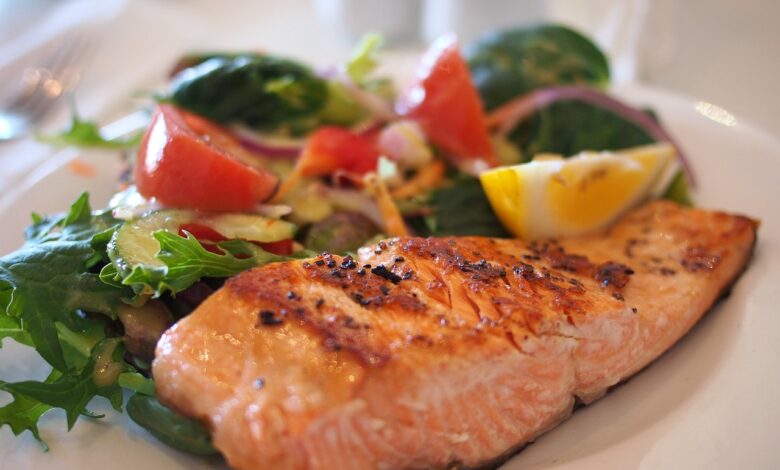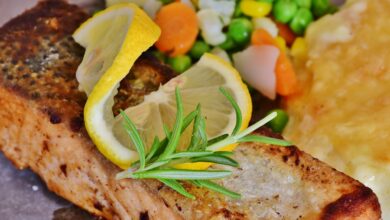Salmon: Health Benefits And Side Effects

The History Of Salmon In Nutrition
Salmon is commonly called “red fish” for the colour of the meat. But salmon, pink salmon, trout are also red. Are they salmon? Let’s find out who is who.
There are two types of salmon: Pacific and real. Pacific salmon is a wild fish that is caught in Sakhalin, Kamchatka, etc. These include pink salmon, chum salmon, Coho salmon, sockeye salmon and several other types of fish that have the same red meat. Pacific salmon live in salt water, only once in a lifetime they spawn in fresh rivers. This fish is considered the most useful.
Real, or noble salmon are almost never found in the wild. They are grown on farms, in lakes and seas, fed with special feed. Noble salmon include salmon (Atlantic salmon) and trout. Trout also combines several species of freshwater salmon. Often they are confused with salmon, because their meat is really similar in appearance. But trout is less oily and more delicate in taste.
Thus, salmon is the collective name for salmon fish, which includes many different species. They can be both inhabitants of the oceans and freshwater, have different taste qualities. Not all of them have a red meat color – for example, whitefish and white fish, but they also belong to salmon.
The Composition And Calorie Content Of Salmon
| Calories per 100 g | 136 kcal |
| Squirrels | 17 g |
| Fats | 6 g |
| Carbohydrates | 2.7 g |
The Health Benefits Of Salmon
All salmon fish are high in protein, fat content varies, but usually salmon is not too fatty.
Salmon contains important polyunsaturated acids: Omega-3 and Omega-6. They are necessary for the elasticity and health of the skin and hair. Also, acids help the vessels to be stronger. With a lack of these substances, the hair becomes dull, brittle, the skin dries. To avoid this, it is recommended to eat fish a couple of times a week.
Salmon is also useful for improving general circulation. B vitamins, as well as nicotinic acid, reduce the level of “bad” cholesterol and expand small capillaries. Studies show that the fatty acids found in salmon affect brain cells. They reduce problems with concentration, attention, memory. An experiment conducted on mice also showed an extension of life span. The animals were fed a diet rich in omega-3s.
Salmon holds the record for the content of phosphorus and potassium.
The Side Effects Of Salmon
A large part of the fish on the shelves is grown in captivity. Often they feed her with antibiotics, hormones, so that she grows faster and is fatter. This can be dangerous, especially for pregnant women and children.
Caution should be taken when eating raw salmon. there may be helminths that settle in the small intestine. Pre-freezing to -35 degrees or cooking fish to an internal temperature of +63 degrees will help to correct the situation (checked with a culinary thermometer). This will kill the parasites.
Smoked salmon is not useful due to the formation of carcinogens during smoking. Also, smoked foods are especially harmful in diseases of the stomach, liver and biliary tract.
In general, salmon is contraindicated for people with seafood allergies.
The Use Of Salmon In Medicine
In its pure form, this fish is not used in medicine, but numerous studies are underway on salmon. The ability of fish and caviar to influence the state of the body, slow down aging, reduce pressure, and even inhibit the growth of tumours is being studied. Basically, these properties are associated with a high concentration of fatty acids and vitamins.
Salmon is a storehouse of nutrients. Fish, especially cooked in a dietary way – steamed, baked, is recommended for feeding weakened people with vitamin deficiencies.




